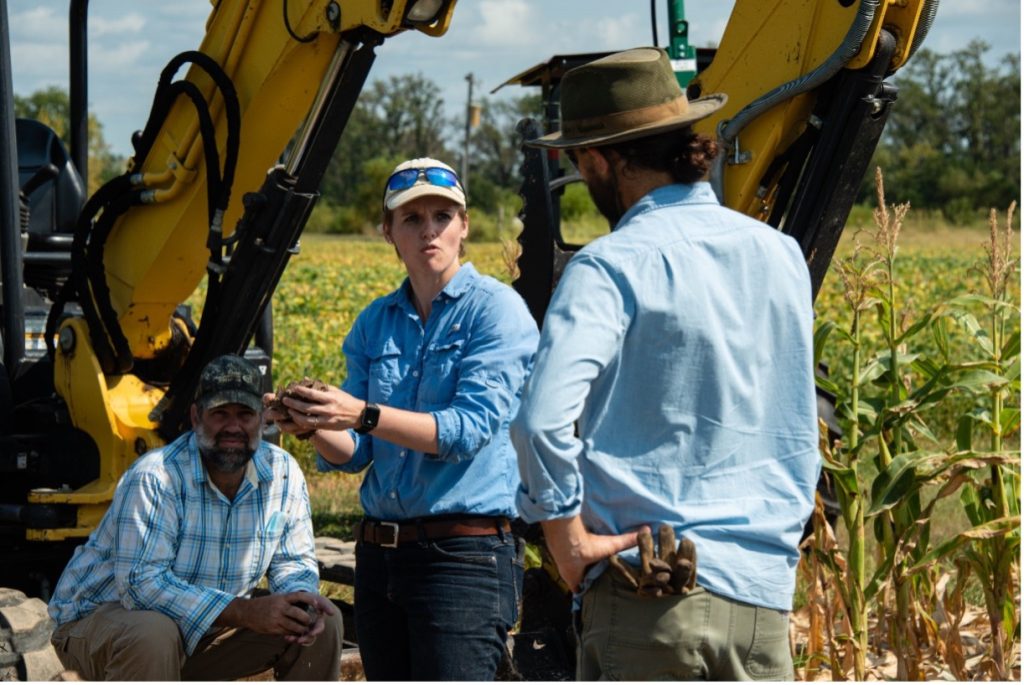Most folks involved with agriculture have had some basic training in soils. We’ve been taught that soil is the upper layer of earth in which plants grow. It is a black or dark brown material typically consisting of a mixture of sand, silt, clay, and rock particles along with various amounts of organic material. We learn that the ideal soil consists of 50% solids (primarily sand, silt, clay, and organic matter) along with 50% pore space, which can be occupied by water and/or air. Most mineral soils have less 8% organic matter – the more, the better. Finally, soil has physical, chemical, and biological components that vary depending on how and where the soils were formed.

This view of soil has led to an accumulation of knowledge related to the physical (e.g. soil texture, structure, compaction) and chemical (e.g. cation exchange capacity, nutrient availability, pH) components as related to agricultural purposes. These components can be manipulated by modern farming techniques. Tillage is used to eliminate compaction or to create a friable seedbed while synthetic fertilizers are applied to offset nutrient deficiencies. These activities have become commonplace practices used in the highly productive agricultural systems that we enjoy here in the US.
The biological component, and its interaction with the soil physical and chemical environment, is the least understood soil component in terms of farmers’ capability to manage it to improve soil conditions and agricultural production. We know the role that soil microbes play in nutrient cycling, improving soil structure and carbon cycling, but up until recently, we have not widely considered how modern agricultural activities impact them in a negative way, nor that farmers can change management strategies to encourage a more positive outcome for the soil organisms and their environment.
Soil health is defined as the continuous capacity of a soil to function as a vital living ecosystem that sustains plants, animals, and humans. To improve the health and function of agricultural soils, we need to adopt a new view of soil that looks beyond manipulation of the physical and chemical components of a soil substrate and recognizes the important role that soil conditions, particularly soil structure and biology, can play in agricultural production. Soil health requires that we look at soil as a habitat that supports microorganisms that are beneficial for crop production, and that soil is part of a broader hydrology, mass, and energy cycle. We must also recognize that various farming practices can have either a positive or negative impact on microorganism habitats and populations.
“Soil health is defined as the continuous capacity of a soil to function as a vital living ecosystem that sustains plants, animals, and humans.”
By implementing soil health management systems, producers can change the habitat that they are creating from one that favors non-beneficial soil microbes, e.g. Pythium or phytophthora, to one that supports a balanced soil foodweb, which drives a robust nutrient cycle and aids in controlling pests. This is accomplished by following four basic principles: minimize soil disturbance, maximize diversity, maintain living roots year-round, and keep the soil covered.
Improving soil health can have many benefits to crop production, including improving the soil structure which improves rainfall capture, improves moisture retention, improves drainage, reduces erosion, and reduces compaction. Soil structure thereby also enhances microbial activity. Over time, improving soil health can reduce input costs and improve crop yields. While there are many benefits to improving soil health, it can be challenging for farmers to implement changes in soil management systems on a large scale. SHI is working to produce training, resources, and farmer mentor networks to support producers interesting in taking practical steps to improve soil health on their farms and measure the impact on crop yield and farm profitability. These trainings and resources will be a key component of the U.S. Regenerative Cotton Fund, which will work with cotton producers in a Soil Health for Sustainable Cotton training program, starting in 2022.
“By implementing soil health management systems, producers can change the habitat that they are creating from one that favors non-beneficial soil microbes… to one that supports a balanced soil food web.”